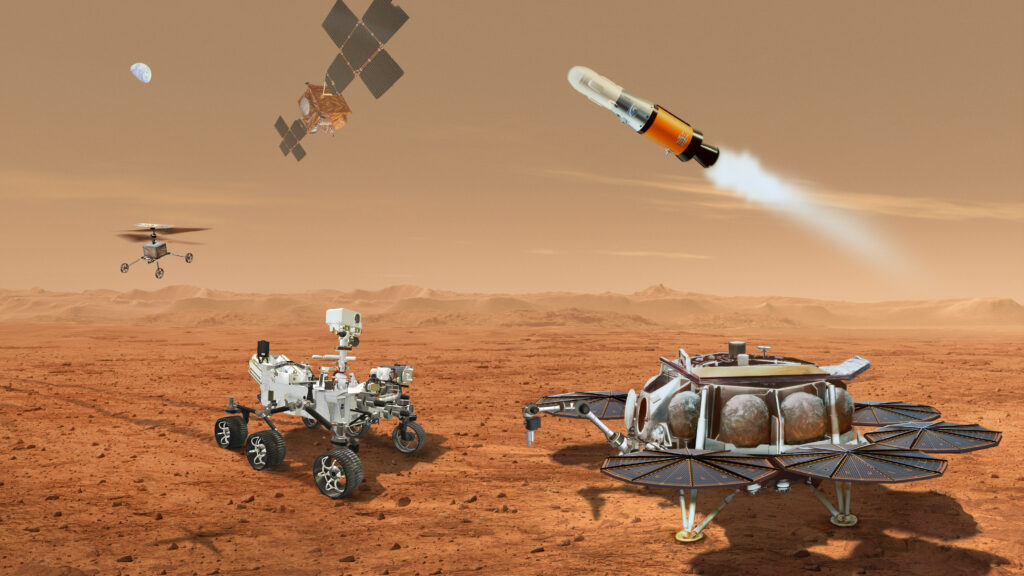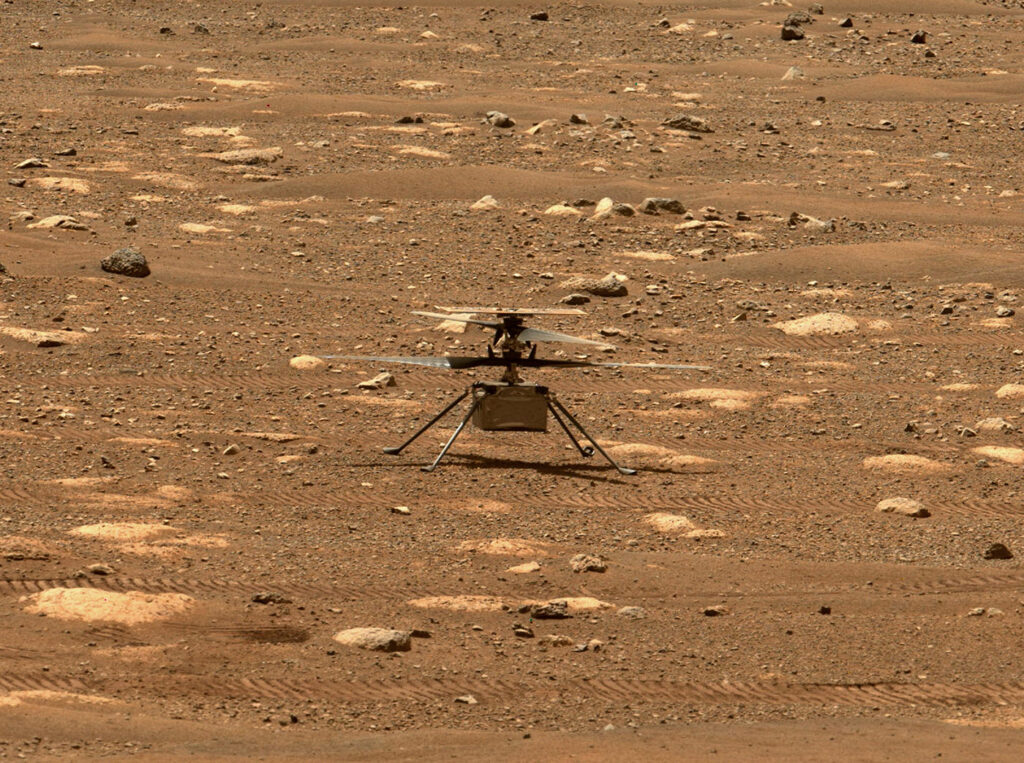NASA and ESA are close to completing the conceptual design of the MSR (Mars Sample Return) mission. Its purpose is to deliver samples of Martian soil collected by the Perseverance rover to Earth. In order to simplify the architecture of the mission, the designers decided to abandon one of the rovers. Two helicopters will take its place.
Mars Sample Return Mission Diagram
The MSR mission is one of the most important NASA and ESA projects in the current decade. It involves sending several vehicles to the Red Planet. Built by NASA SRL (Sample Retrieval Lander) will have to land on Mars and pick up the collected Perseverance capsules with samples. Next, the MAV module (Mars Ascent Vehicle) installed on it will take off and enter an areocentric orbit. There it will dock with the ERO (Earth Return Orbiter) probe built by ESA and transfer samples to it. After that, the European spacecraft will leave the vicinity of Mars and will set a return course to our planet.

Given the scope and complexity of the task, NASA and ESA have already made changes to the mission plan several times. So, in the spring of 2022, a decision was announced to divide the SRL into two separate landers. One of them was supposed to deliver a MAV to Mars, and the other was a special rover that was supposed to pick up and bring to it the samples collected by Perseverance. The designers motivated this decision by the fact that it will allow the use of a smaller heat shield and the “sky crane” system, which were used to land the Curiosity and Perseverance rovers and have already proven their reliability.
Replacing the rover with helicopters
However, this innovation did not last long. At a press conference held on July 27, it was announced that NASA and ESA decided not to send a separate lander with a rover to Mars. The decision was made based on the latest reliability assessments and the expected operational life of Perseverance. They showed that the rover will remain operational by the time of landing SRL. Therefore, the designers decided to abandon a separate rover and use Perseverance to deliver the capsules. This solution greatly simplifies the architecture of the mission, allowing to reduce the number of launches and equipment involved, which in turn will reduce risks.

At the same time, in case Perseverance is still unable to deliver samples for some reason, NASA will have a safety net. We are talking about two helicopters that will go to Mars together with SRL. According to the engineers, their design will be based on the Ingenuity drone design. They will be slightly heavier than their predecessor and will receive small robotic arms, and wheels will be installed on their landing supports. If necessary, helicopters will land next to the capsules, “drive up” to them, grab them with manipulators and then deliver them to the SRL. In addition to Perseverance insurance, helicopters will be able to be used for other tasks. These include reconnaissance of the area, as well as shooting the launch of the MAV.
At the press conference, it was also announced that in October of this year, the MSR project will move to the preliminary design phase. It will last one year, and engineering prototypes of all the main components of the mission will be created within its framework.
At the moment, the launch of the ERO device is scheduled for the autumn of 2027, SRL — for the summer of 2028. If all goes well, samples of Martian soil will be delivered to Earth in 2033.
Recall that Perseverance recently inspected the possible landing site of the SRL device.
According to https://www.nasa.gov
Follow us on Twitter to get the most interesting space news in time
https://twitter.com/ust_magazine
